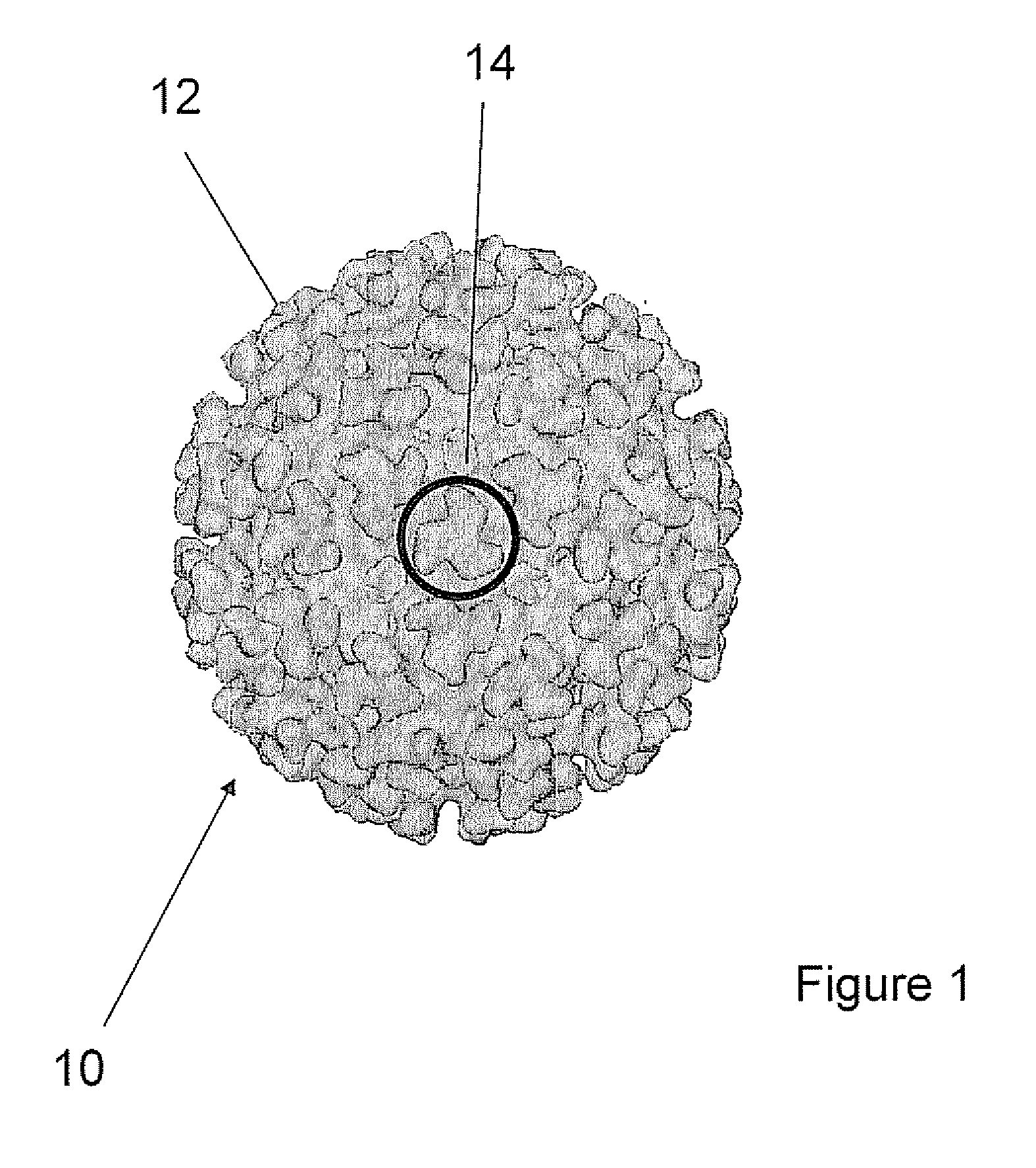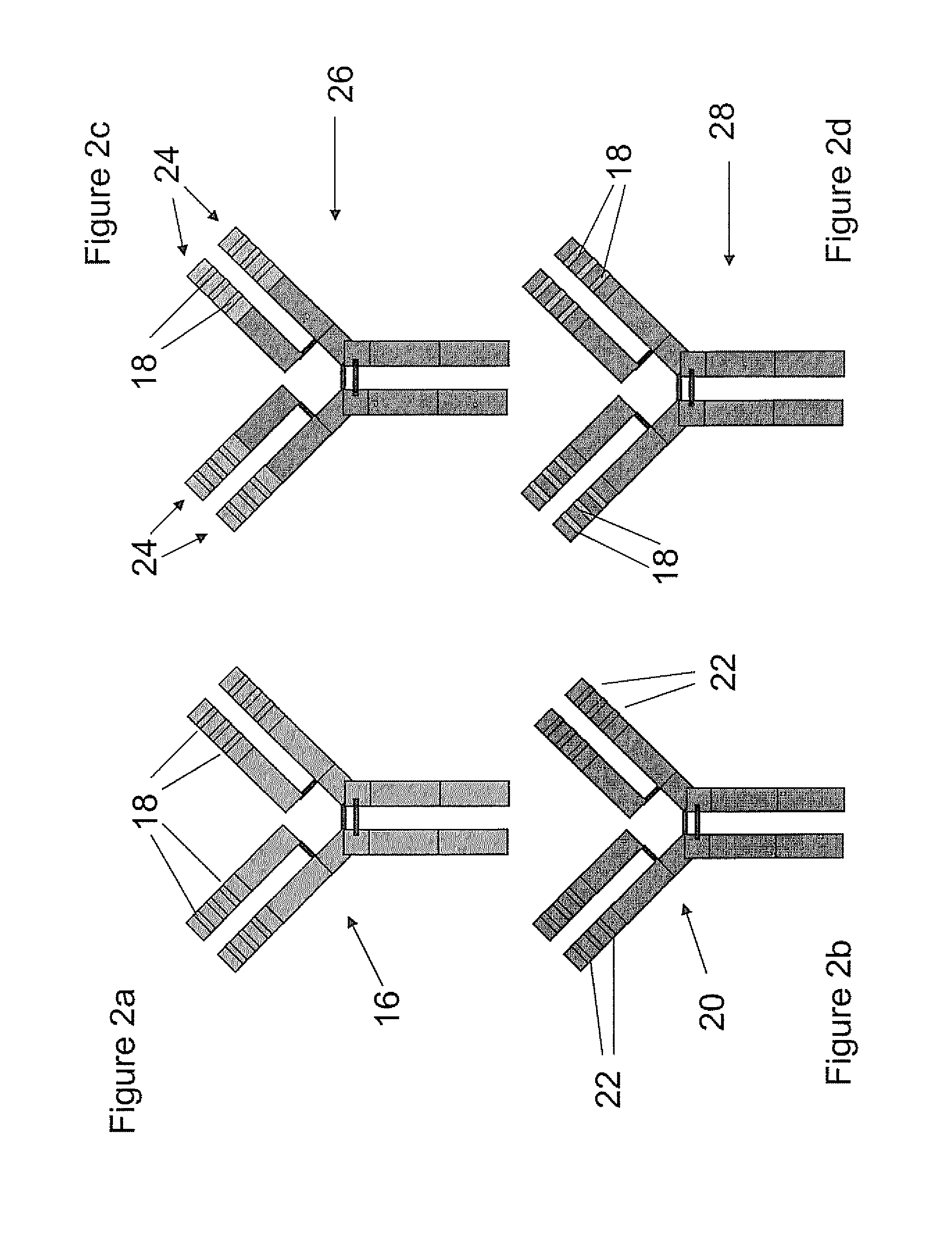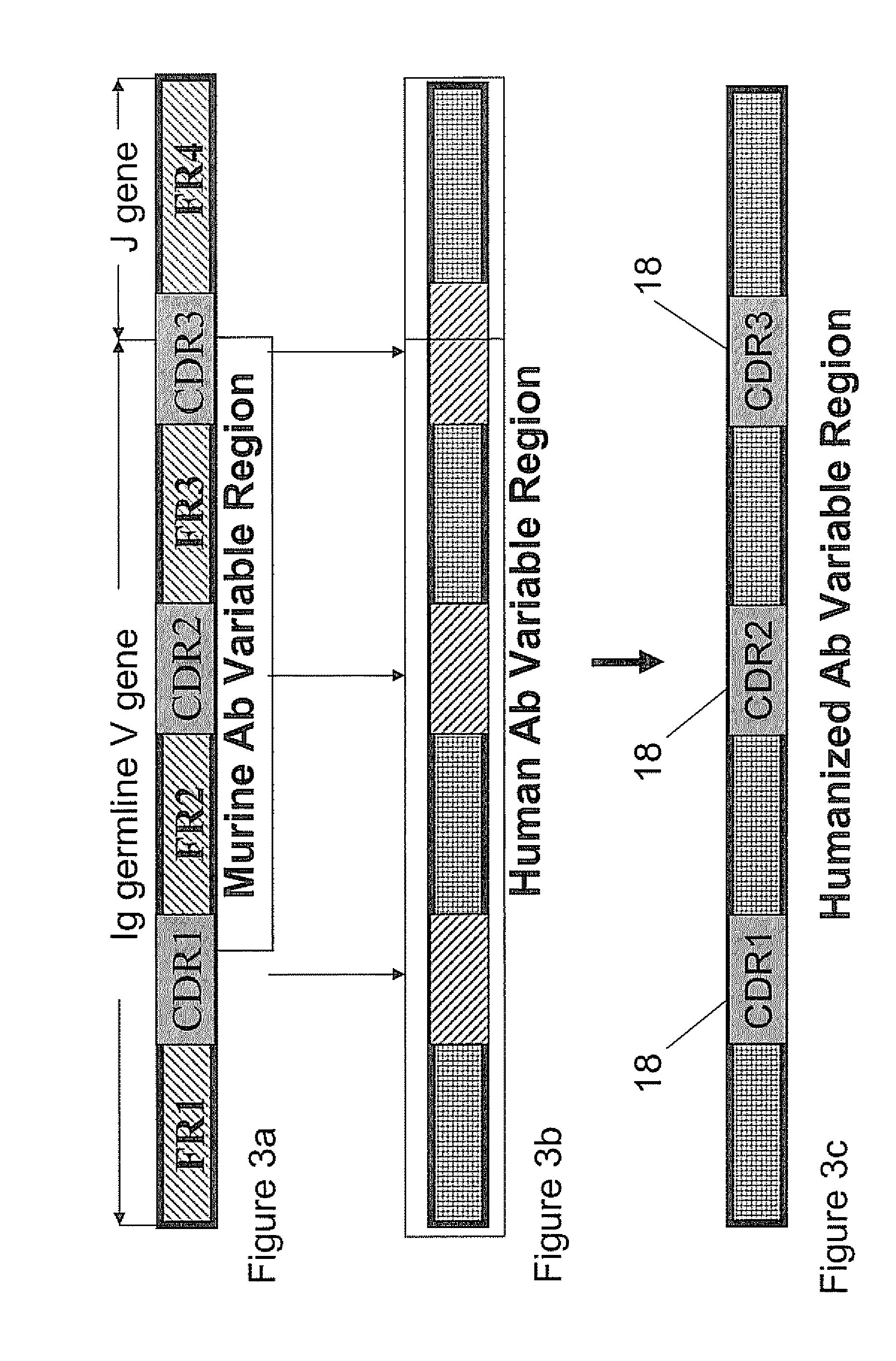Humanized Anti-venezuelan equine encephalitis virus recombinant antibody
a technology of venezuelan equine encephalitis and humanized recombinant antibodies, which is applied in the field of humanized recombinant antibodies directed to the venezuelan equine encephalitis virus, can solve the problems of multiple immunizations, no antiviral drugs available that are effective, and periodic boosts
- Summary
- Abstract
- Description
- Claims
- Application Information
AI Technical Summary
Benefits of technology
Problems solved by technology
Method used
Image
Examples
example 1
Construction of Hu1A4A1IgG1 and in vitro Studies
[0042]In the study described below, murine mAb 1A4A1 CDRs of VH, VL were grafted onto the frameworks of germline variable and joining (V, J) gene segments of human Ig heavy and light chains, respectively, which were chosen based on the CDR similarities between human Igs and murine mAb 1A4A1. Furthermore, the humanized VH and VL were, respectively, grafted onto human gamma 1 heavy chain constant regions (CHs) and kappa 1 light chain constant region (CL) to assemble the whole humanized Ab gene. The resultant whole humanized mAb gene was synthesized and cloned to an adenoviral vector. After the humanized Ab was expressed in HEK 293 cells and purified with protein L column, the Ab was demonstrated to retain antigen-binding specificity and neutralizing activity.
[0043]Materials and Methods
[0044]Humanization of Murine mAb 1A4A1
[0045]Murine mAb 1A4A1 was provided by Dr. J. T. Roehrig (Division of Vector-borne Infectious Diseases, Centers for D...
example 2
In vivo Study—Protection of Mice from VEEV Challenge by Passive Immunization with Hu1A4A1IgG1-furin or Hu1A4A1IgG1-2A
[0072]Materials and Methods
[0073]Passive Immunization
[0074]Balb / c mice aged 6-8 weeks were injected intraperitoneally (i.p) with 50 μg of Hu1A4A1IgG1-furin or Hu1A4A1IgG1-2A in 100 μl PBS, human anti-VEEV IgG in 100 μl PBS (positive control) or 100 μl PBS alone (negative control) 24 h prior to VEEV challenge.
[0075]VEEV Challenge
[0076]Each mouse was challenged subcutaneously (s.c.) with 30-50 plaque forming units (pfu) of virulent VEEV (Trinidad donkey, TRD) in 50 μl of Leibovitz L15 maintenance medium (L15MM) 24 h after passive immunization. The challenge dose approximated to 100×50% lethal dose (LD50). Mice were examined frequently for signs of illness for 14 days, and humane endpoints were used.
[0077]Results
[0078]Hu1A4A1IgG1-furin or Hu1A4A1IgG1-2A Clearance in Mice
[0079]To determine the half-life of Hu1A4A1IgG1-furin or Hu1A4A1IgG1-2A in mouse serum, groups of 4 mi...
PUM
| Property | Measurement | Unit |
|---|---|---|
| concentration | aaaaa | aaaaa |
| volume | aaaaa | aaaaa |
| temperature | aaaaa | aaaaa |
Abstract
Description
Claims
Application Information
 Login to View More
Login to View More - R&D
- Intellectual Property
- Life Sciences
- Materials
- Tech Scout
- Unparalleled Data Quality
- Higher Quality Content
- 60% Fewer Hallucinations
Browse by: Latest US Patents, China's latest patents, Technical Efficacy Thesaurus, Application Domain, Technology Topic, Popular Technical Reports.
© 2025 PatSnap. All rights reserved.Legal|Privacy policy|Modern Slavery Act Transparency Statement|Sitemap|About US| Contact US: help@patsnap.com



